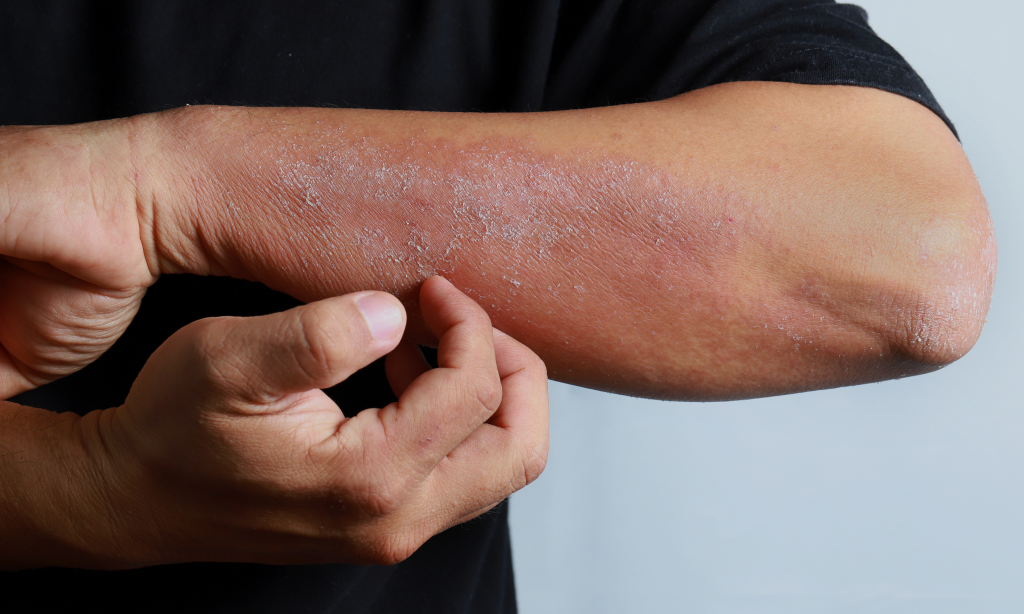Atopic eczema is a condition that affects the skin. It is often called atopic dermatitis and is associated with cracked skin that is dry, red and itchy. The condition usually develops at a very young age and in most cases the condition is a chronic disease, which means its symptoms are present for a long period of time – sometimes even into a child’s adulthood. NHS Choices report that some adults also develop atopic eczema even if they did not have the condition as a child. It is important not to confuse atopic eczema with other types of this disease, such as varicose eczema, contact dermatitis and discoid eczema.
Atopic Eczema Symptoms
Let’s start by considering the symptoms of atopic eczema. This will help you differentiate between atopic eczema and other types of skin conditions, and will help you know when to seek medical assistance to ensure the condition does not progress. As we have already noted, atopic eczema causes dry, itchy skin that is cracked and often also dry. Mayo Clinic reports that, apart from these obvious symptoms, patients may also experience inflammation of the skin, as well as sensitivity. In some cases, raised bumps that are very small in size can also develop. When scratched, these bumps usually secrete a fluid. Another common symptom is a patch that develops on certain parts of the body, such as the hands, wrists, neck, eyelids and feet.
Atopic Eczema Causes
Medical experts haven’t been able to determine a particular cause of atopic eczema to date, which makes it difficult to determine what exactly can be done to reduce a person’s risk of developing the condition. WebMD explains that, even though no specific cause has been detected, it is known that individuals that have a family history of allergic rhinitis and other types of allergies are at a much higher risk of developing atopic eczema than others.
Atopic Eczema Treatment
Even though atopic eczema can be rather harsh in some cases, it is important to realize that numerous treatment options are available to help reduce the severity of the skin condition. Fortunately, this condition usually does not require any emergency attention – some people do, however, prefer to visit their nearest emergency department to obtain an appropriate treatment should severe flare ups occur. Medscape explains that moisturization is one of the key elements to properly managing this condition and can help to reduce the symptoms. In cases where flare ups occur frequently and simply moisturizing the affected parts does not work, topic steroids can be used in an ointment form to help treat the symptoms of the condition. In some cases, immunomodulators or interleukin inhibitors are also used to treat atopic eczema.
Bioresonance Therapy
Since the inflammation (and some of the other symptoms) that is present when in patients with atopic eczema develop is considered to be an allergic reaction, bioresonance therapy has posed as a potential treatment option to help patients deal with the symptoms and even reduce the severity and frequency of flare ups. Many patients have been successfully treated for inflammatory and allergy-related conditions, and the treatment option is also effective at treating a wide variety of skin problems – including atopic eczema.
Conclusion
Atopic eczema can be a problematic condition as it affects the skin, which means it is not only a disease that affects the body’s wellbeing, but it can also affect a person’s self-esteem due to the visual impact it has. Moisturizing the affected areas frequently can sometimes help to manage this condition, but other treatment options are often required. Bioresonance therapy is one particular option that people are starting to opt for lately due to its efficiency, as well as the lack of side-effects.
References:
https://bioresonance.com/efficacy-observation-of-79-cases-of-allergic-skin-disease/
http://www.nhs.uk/conditions/Eczema-(atopic)/Pages/Introduction.aspx
http://emedicine.medscape.com/article/1049085-treatment#d6


